In this publication, we will present the SWOT analysis of LIDL 2024. We will analyze and discuss the main strengths, weaknesses, opportunities, and threats of one of the leading hard discounters in Europe.
LIDL overview
LIDL is a very popular hard discount retailer in Europe. The company was founded in 1930 and belonged to the German Schwarz group, headquartered in Neckarsulm, Germany.
Today, LIDL has more than 10,500 stores in over 30 countries, generating annual sales of 125.3 billion euros in 2020. Its mission is: “The right price for the right things.”
The main markets targeted by Lidl’s management are Germany, France, Poland, Spain, Sweden, the UK, Italy, Austria, the Czech Republic, and Switzerland.
This German retail giant, which is now present in several European countries, is constantly expanding its activities and innovating its products and services by making the most of the opportunities in its environment.
However, LIDL is confronted, more than ever, with major economic and socio-cultural threats, particularly the complexity of foreign markets and the arrival of new competitors.

To perform an organization’s strategic diagnosis and adopt the right strategic choices, strategy experts usually use the SWOT model to identify and measure the company’s strengths and weaknesses as well as the current and potential opportunities and threats in its environment.
This article presents the example of Lidl’s SWOT analysis, based on our team’s latest research and analysis.
The internal strategic analysis of LIDL
The role of internal strategic analysis is to identify your company’s main strengths and weaknesses. For Lidl, our literature review identified the following strengths and weaknesses.
Strengths of LIDL
1. Low prices
All hard discounters, like LIDL, grow by offering low prices to their price-conscious customers. All the products that consumers use daily are sold at very low prices compared to other supermarket giants (Carrefour, Walmart).
So, the low prices are a very important strength of LIDL.
2. High customer satisfaction
LIDL stores offer many well-assorted products with low prices compared to the competition. Middle and low-income customers express high satisfaction with this company.
Indeed, the low prices of LIDL stores allow customers to make significant savings on their food purchases.
In addition, the onset of the Covid-19 crisis and the current global economic recession have enabled LIDL to attract even customers from other stores that offer higher prices than LIDL.
3. Effective customer support
Hard discount stores have a strong environment supporting most food retailing parameters.
In addition to low prices, LIDL has other elements such as multiple locations, shopping convenience, good visual merchandising, and low customer waiting time.
4. Brand awareness and reputation
Lidl’s brand awareness has been growing steadily, especially on the European continent. The value of the brand and the place it occupies with customers make it a major asset.
5. Reliable distribution network
LIDL has been in this market for many decades and has developed strong and reliable relationships with its stakeholders. It maintains a strong supplier base and ensures no stoppages to disrupt customer expectations.
Through its efficient and reliable retailing network, LIDL ensures that its products reach the target market in the right quantities and at the right time.
6. Customer portfolio
LIDL has built a huge base of loyal customers over the years. Its unbeatable prices have driven customers to visit its stores worldwide.
In addition, due to its excellent customer service and wide range of products, LIDL has many loyal customers to its brand. Many customers always buy from this brand without turning to other retailers.
7. Wide range of products
LIDL offers a wide range of products, including groceries, housewares, and other non-food products. Therefore, the company can appeal to a diverse customer base and meet a wide range of customer needs.
Weaknesses of LIDL
1. Low-profit margins
LIDL stores offer very low prices to consumers. As a result, this sales policy hurts the company’s margins. Therefore, the company’s profits depend largely on the volume of sales.
Most of the time, company managers carry out many unethical practices, such as price discrimination. In this way, the company tends to mistreat its suppliers to guarantee a constant margin.
2. Employee dissatisfaction
LIDL constantly makes huge efforts to satisfy its customers, but its employees are dissatisfied. To survive in the market, Lidl has to increase its productivity at the expense of its employees’ well-being.
Most of its employees have to work long hours and multitask. Lidl’s employees are paid less than the market standard.
As a result, most of Lidl’s employees are dissatisfied with the working conditions and the higher turnover rate, which negatively influences the company’s reputation in the labor market.
3. Dependence on a few key suppliers
LIDL sources most of its supplies from a limited number of suppliers, which could increase the company’s risk if one of its suppliers fails to meet the deadlines and quantities required by Lidl’s management.
4. Limited product innovation
Lidl’s focus on low prices may limit the company’s ability to invest in product, service, and work process innovation.
As a result, it may be difficult for the company to compete with more innovative competitors.
5. Limited marketing and advertising
LIDL is known for keeping its costs low, which may include limited marketing and advertising efforts. This could limit the company’s development of brand awareness and recognition and its ability to attract new customers.
The external strategic analysis of LIDL
This section presents the results of our external analysis of the global hard discount market. Here are the main opportunities and threats of this promising and complex market.
Opportunities of LIDL
1. Huge growth potential in emerging markets
The purchasing power of consumers in emerging countries, such as Eastern Europe (Serbia), Brazil, Turkey, and India, is constantly increasing, which has a positive impact on the demand for food and other products sold by LIDL;
2. Good reputation of German brands
Over the years, “Made in Germany” has become a quality label perceived by international consumers as an indication of high-quality products.
Several market studies and surveys have shown that German products enjoy an excellent reputation worldwide. German brands are often known for their durability and prestige.
This strong brand image in the minds of the global consumer represents a major opportunity for German companies to enter foreign markets.
3. Global demand for food products
United Nations estimates that the world’s population will reach eight billion on Tuesday, November 15, 2022. Moreover, the growth of the world population is expected to continue over the years.
Thus, the demand for different food products is constantly increasing.
Food purchases are part of the category of necessities. These facts will allow hard discount stores, such as LIDL, to maintain their expansion and ensure their sustainability in the long term.
4. The benefits of globalization
The positive effects of globalization have led to the standardization of consumer habits and lifestyles of the global consumer.
Everyone wants to shop in large stores that are attractive and have a good atmosphere that allows consumers to have a pleasant shopping experience.
5. Free trade agreements
In recent years, the German government has signed several free trade agreements with many countries that represent promising business opportunities for German companies.
These agreements allow German multinational companies, such as LIDL, to easily penetrate high-potential markets by establishing subsidiaries and franchises and generating considerable revenues and profits.
Threats of LIDL
1. Strong competition in the European and American markets
Becoming one of the leading hard discounters in Europe is difficult, but staying on top for a long time is even more difficult.
Today, more than ever, LIDL is facing fierce competition from the big retail giants (Walmart, Aldi, and Costco) in the European Union, the United Kingdom, and the United States markets.
In addition, the serious threat is the continuous arrival of new, well-armed competitors with considerable financial and commercial capacities.
These markets have become very saturated, and their penetration is becoming increasingly difficult.
2. Economic, political, and socio-cultural risks
At the cultural level, it is clear that consumer behavior and buying habits are constantly changing. Global consumers demand products and services with high-added value and reasonable prices.
The ultra-connected Generation Z is constantly testing and adopting new, more comfortable shopping, such as drive-through and online shopping, and is constantly looking for personalized and enjoyable shopping experiences.
Also, Lidl’s business and financial performance depend to a large extent on global economic and political stability.
Finally, because LIDL operates globally, it is always affected by fluctuating exchange rates. The company reports its financial earnings in euros.
As a result, it affects its revenues and profits because the European currency is constantly exposed to volatility compared to other financial currencies, such as the dollar or the British pound.
3. Global economic recession
Covid-19 is gone, but those negative impacts are still there. An unprecedented economic recession now marks the global economic environment.
The deterioration of purchasing power has pushed the global consumer to avoid, as much as possible, impulse purchases or unnecessary purchases (gifts, gadgets, accessory products).
4. Strict regulations and laws
LIDL is present in several countries on different continents. As a result, the company’s managers must consider the sometimes conflicting laws and regulations of each country where Lidl operates.
What’s more, these laws are constantly changing. Neglecting or failing to comply strictly with the laws of each country can cause dramatic economic and financial damage to the branding of LIDL.
5. Negative effects of the war in Ukraine
A survey of some 500 companies conducted by the German Federal Bank has revealed that production losses due to the war in Ukraine will increase in the second quarter of 2022.
Some German manufacturers fear considerable production losses” until 2024. Due to its heavy dependence on Russian gas and the weight of its industry, Germany is more exposed than its European neighbors to the economic consequences of the war in Ukraine.
SWOT Analysis Matrix of LIDL
To summarize all of LIDL’s strengths, weaknesses, opportunities, and threats, we present below the SWOT analysis matrix of LIDL or 2023.

Final thoughts
In 2024, LIDL will be one of the leading hard discount retailers in the world. The company continues expanding into new high-potential markets, such as the United States and Eastern Europe. The company’s key figures are all in the green and are steadily improving.
However, the adverse effects of the current global economic recession and increased competitive pressure are the main threats that Lidl’s management must consider to maintain its position and ensure its international growth.
SWOT Analysis Examples 2024
There is no better way to understand how to conduct a SWOT analysis at your company than with a concrete example.
Below you will find our free, up-to-date, and concrete examples of SWOT analyses of large companies and multinationals conducted in 2024.


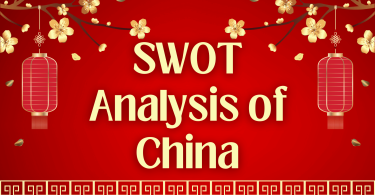
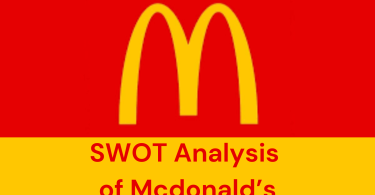

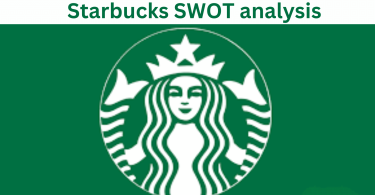




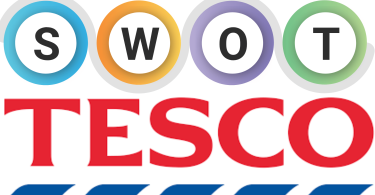
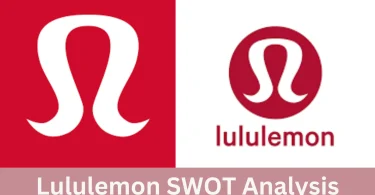
Leave a Comment